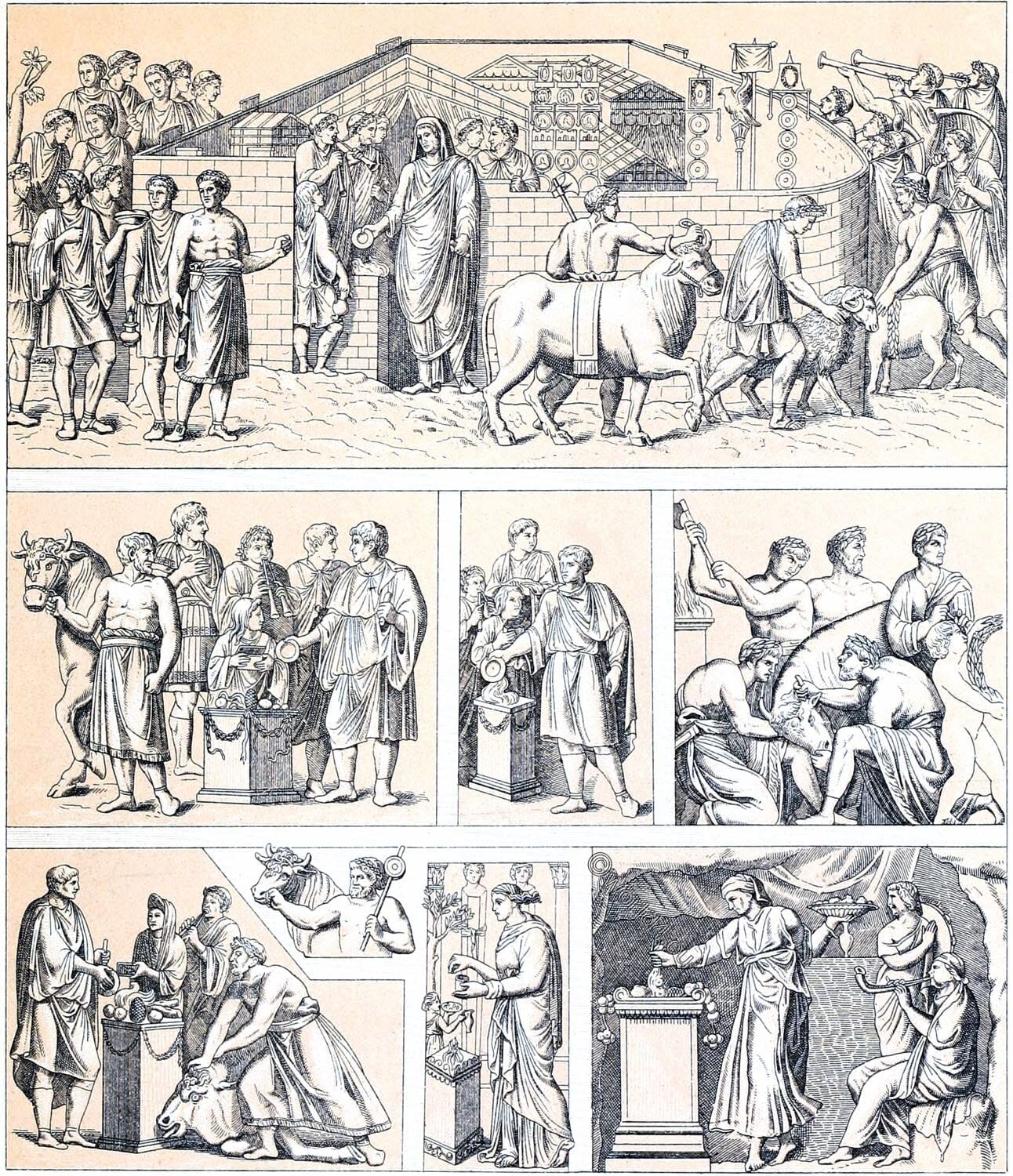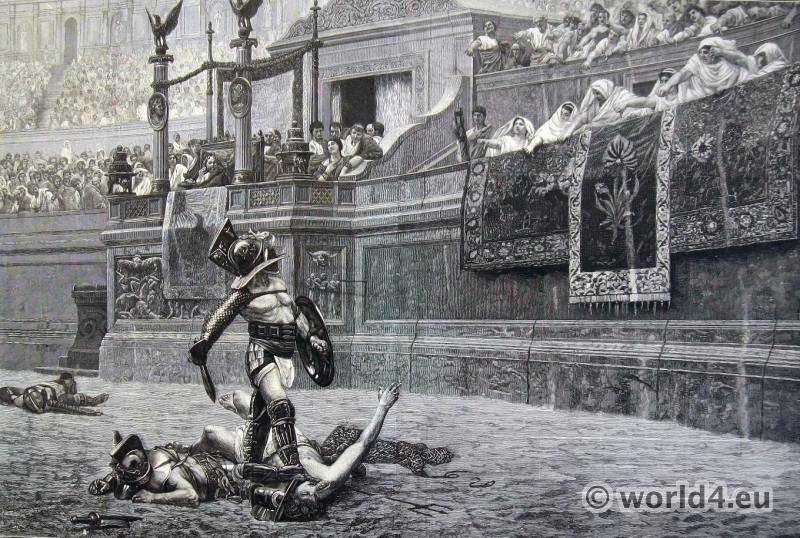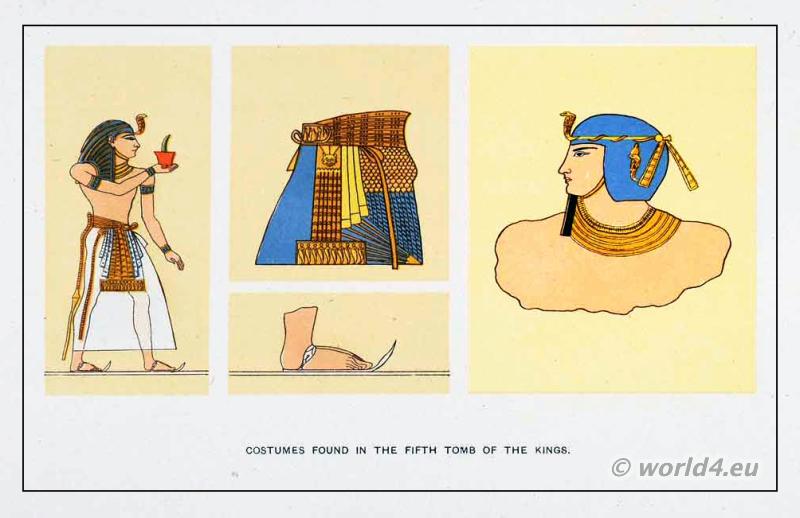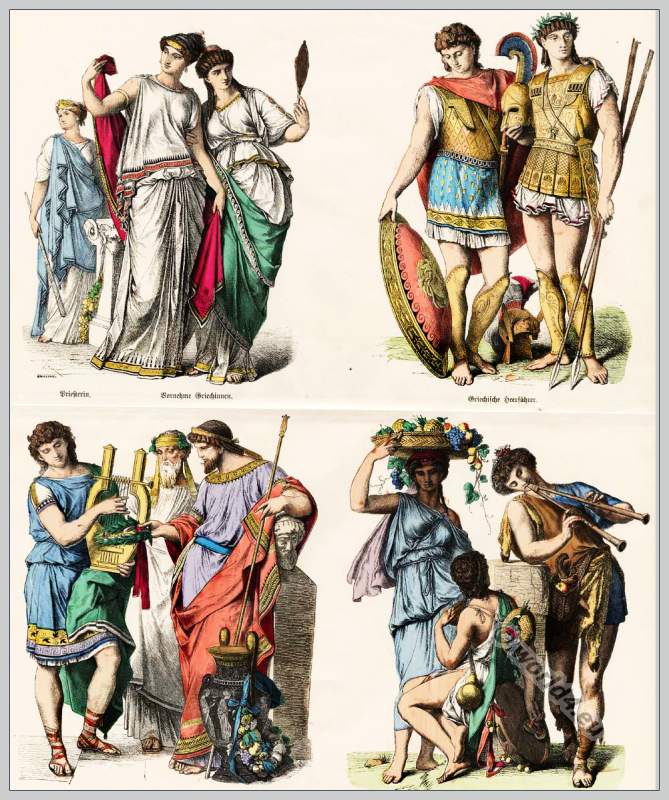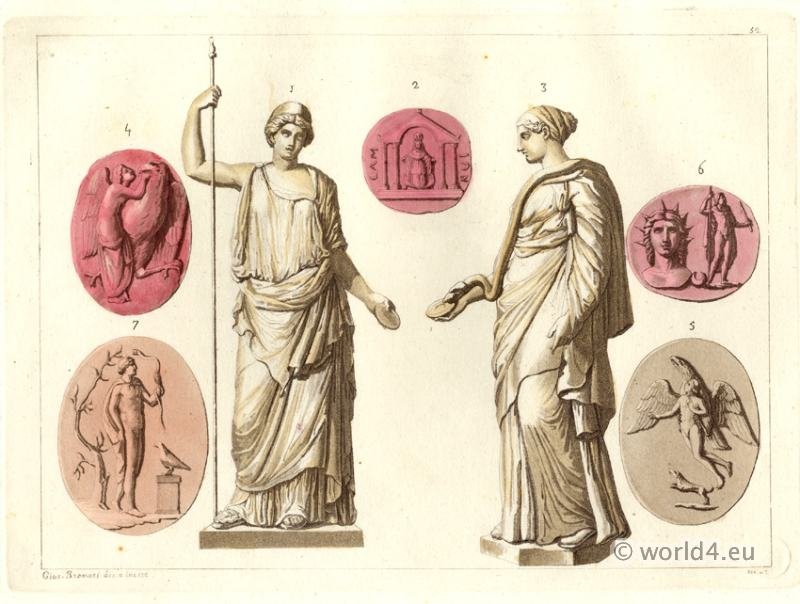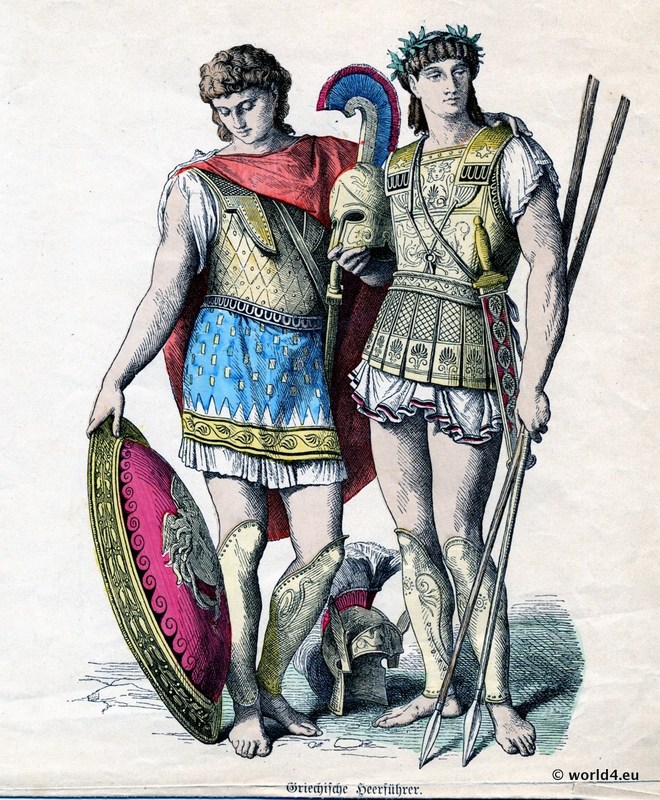ROME. RELIGIOUS CEREMONIES AND SACRIFICES.
1
2 3 4
5 6 7 8
No. 1 represents an expiatory sacrifice, the Suovetaurilia, consecrated to Jupiter Capitolinus or Mars, usually offered by the triumphator (vir triumphalis, “man of triumph”,) at the end of a lustrum or after a triumphal procession. They consisted, as the name suggests, of a boar (sus), a ram (ovis) and a bull (taurus). They marched in solemn procession with the animals around the sacrificial site and then stabbed them in the throat.
In our picture the train goes around the camp. The emperor represents the place of the Flamen Martialis, the priest of mars, the god of war *), and sacrifices by pouring wine from a bowl (patera) into the flame burning on a brick altar. On one side of the imperial tent there are the standards and on the other side the cage with the holy hens that were used for auspices, i.e. prophecies.
*) Mars was one of the central gods in the ancient Italian religion, especially in Rome and the most important Roman god besides Jupiter. In the founding legend of Rome, Mars is the father of the twins Romulus and Remus and thus the progenitor of the Romans. The month of March, originally the first month of the year for the Romans, was dedicated to Mars.
The altar server at the sacrificial ceremony is Camillus (Latin for “sacrificial servant”), a boy who holds the wine jug; Spondaules blows the double flute, the tibia longa. The sacrificial butchers, Victimarii, carry the animals, which have been sprinkled with mola salsa, salted flour, before. This is the first part of the ceremony. The procession around the place to be cleaned is repeated three times. The bull wears a bandage, vitta, the pig a wreath, sertum. With the exception of the priest and Camillus, all those taking part in the sacrificial ceremony are wreathed.
The papa, an offering servant, opens the procession; his axe is used to stun the bull.
The cultrarius wields the knife that cuts the throats of the animals. The following sacrificial servants carry vessels. One is either an incense burner or a vessel to collect the blood. An offering cake seems to lie on the bowl.
At no. 2 only a bull and fruit are sacrificed; the pine cone is dedicated to the Cybele *). Here too, the emperor offers the sacrifice on the wreathed altar. Camillus holds the acerra, the box from which the incense is taken
*) Until late antiquity, the cult of Kybele and Attis was – similar to the Mithras cult – a mystery cult spread throughout the Roman Empire.
No. 3 also depicts the sacrificial Trajan. The altar is square, but there were also round altars. The altar, ara, was usually made of grass in the field; otherwise it was built of granite, bricks or marble. At the top, there was a cavity for the fire and at the side or at the bottom an opening through which wine, blood and other liquids could run off.
No. 4 shows the activity of the victimarii, the sacrificial servants; the popa uses the back of the axe to deliver the blow that is to stun the bull. They are all wreathed.
No. 5 is the fragment of a Neptune sacrifice; the bull is black. Black animals were also sacrificed to Pluto, the god of the underworld.
No. 6 represents a popa equipped with the malleus, the sacrificial hammer.
No. 7 is the representation of a bloodless sacrifice; in the background, two herm pillars supporting a temple entablature can be seen. This is obviously intended to indicate the holy district. Incense is burned on the altar. A girl serves as an altar girl, for the sacrificing woman, who holds the wine jug and a bowl of fruit or cake.
No. 8 is also a bloodless victim. The music for the holy act is played with a tambourine and a double trumpet.
Nos. 1, 2, 3, 5, 6 from the Trajan Column.
Nos. 4, 8 Roman marble reliefs. No. 7 a Roman ivory relief.
(After Montfaucon, L’Antiquité expliquée.)
Source: History of the costume in chronological development by Auguste Racinet. Edited by Adolf Rosenberg. Publisher: Firmin-Didot et cie. Paris, 1888.
Literature: Papers of the British School at Rome. VICTIMARII IN ROMAN RELIGION AND SOCIETY by Jack J. Lennon (2015).

Continuing
- Roman Costume and Fashion History.
- Roman clothing in its diversity and development.
- The early toga. Former roman clothing. 700 BC. – 500 BC.
- The Toga and the manner of wearing it.
- The toga of a Roman senator. The armor of a Roman general.
- The costume of the Roman women. Republican Rome.
- The usual Roman garment during the Republican Rome.
- Roman Republic. Senator in the toga. A commoner in the paenula.
- The Togatus and the Roman ladies of the imperial period.
- The Roman Tunica or the Dorian and the Ionian chiton.
- Musical instruments. Wind and Stringed instruments of ancient Rome.
- Roman headgear and hairdos of antiquity.
- The Roman army. The legionary soldier. Equipment, assault weapons.
- Military of ancient Rome. Roman legions. Field signs. The legionary eagle.
- Roman soldiers and gladiators. Function, armor and armament.
- The Roman legionary. Reconstructed after reliefs of the Trajan’s Column.
- The Lictor panel. A stately Roman lictor in a rich costume.
- The Roman Paenula. The cowl or hood. Traveling cloak.
- Pontifex Maximus. Roman high priest of antiquity. Collegium Pontificum.
- An Augur. Roman official priesthood.
- The Rex Sacrorum also known as Rex Sacrificulus.
- Religious sacrificial ceremonies of Romans in ancient times.
- A quadriga. Greek-Roman Gods. The ancient greek-roman culture.
- The Clothing of the Vestal Virgins. The Cult of Vesta in ancient Rome.
- Shoes of antiquity. Sandals, closed footwear of the ancient world.
- The Etruscans. Culture, costumes, warriors in Etruria.
- Greek-Roman furniture. Throne chair, Bisellium, Sella castrensis.
- Greek-Roman art. Mosaics, painted bas-reliefs and wall paintings.
- A quadriga. Greek-Roman Gods. The ancient greek-roman culture.
- The Roman Ornament. Corinthian and Composite Capitals. The Acanthus.
- Rome. The atrium. Interior of an ancient Roman palace.
- Pompeji. Roman architecture. The Pompeian House. The Atrium.
- The Roman Pantheon, a temple to all the Gods.
- Britain under Roman rule. Celt and Roman. England 43 BC to 440 AD.
- Hadrians Wall. Roman Britain. Maps, Places, Tribes.
- The Gallic and Gallo-Roman costume period.
Discover more from World4 Costume Culture History
Subscribe to get the latest posts sent to your email.

